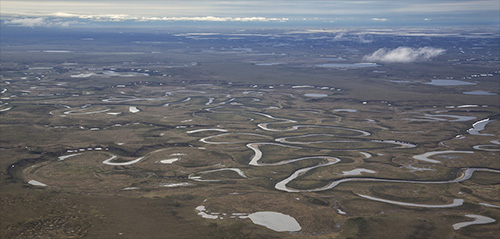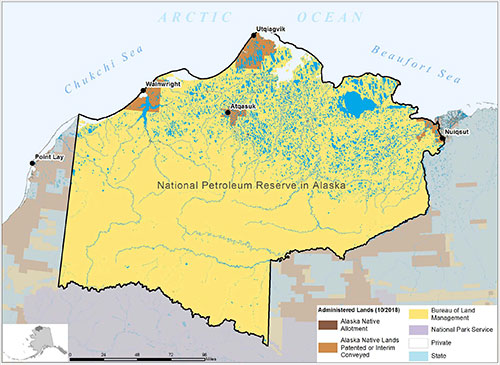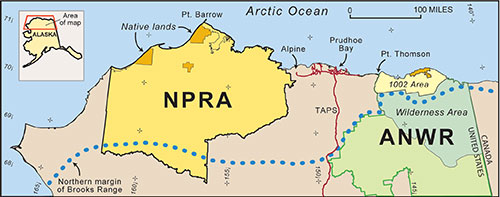
Plan Opens Oil Drilling in Alaska’s National Petroleum ReservePosted & Edited By MARY KAUFFMAN
June 26, 2020
“I want to thank President Trump, Secretary Bernhardt, and the Department of Interior for working closely with Alaskans to better balance federal land usage in the National Petroleum Reserve in Alaska,” said Governor Dunleavy. “My administration welcomes the responsible investment and development that will occur as a result of this action.”
“As Americas only Arctic State, it was refreshing that the Federal Administration considered Alaska’s science and our local understanding of the subtle environmental nuance that is Alaska’s North Slope when making this critical decision in its EIS for the conservation of the environment and the security of this Nation. I feel confident that the oil and gas resources of the National Petroleum Reserve in Alaska can be developed in a manner conserves the fish and wildlife resources and their uses,” said Commissioner Doug Vincent-Lang of the Alaska Department of Fish and Game. The NPR-A is estimated to hold 8.7 billion barrels of recoverable oil. The Bureau of Land Management (BLM) initiated the EIS in November 2018 to determine the appropriate management of BLM-managed public lands in the NPR-A. The BLM issued a draft EIS on November 2019 and the final EIS comes after a 75-day public comment period. A Record of Decision will follow the publication of the final EIS and impact any future BLM Alaska lease sales within the NPR-A.
“Turning the oil industry loose on America’s biggest undeveloped frontier would be a disaster for our climate and Alaska’s wildlife,” said Kristen Monsell, a senior attorney at the Center for Biological Diversity. “Drilling oil and gas wells in the Western Arctic would do immense harm to Arctic wildlife already under siege from the climate crisis. We can’t let that happen.” Yesterday’s final “integrated activity plan” from the Bureau of Land Management opens up sections of the National Petroleum Reserve-Alaska protected from oil leasing by the Obama administration. Quoting a news release from the Center for Biological Diversity, the final plan adopts a preferred alternative that was not included in the proposed plan and turns over even more land than the 18.3 million acres under that proposed plan. The Center for Biological Diversity says the plan would offer oil companies the area around Teshekpuk Lake, which has been protected habitat for caribou herds, polar bears, millions of migratory birds and subsistence hunting for Alaska Natives. The protected habitat area around Teshekpuk Lake is adjacent to the Willow oil-project site that ConocoPhillips is currently seeking approval from the BLM to develop.
The Trump administration has already held large lease sales in areas of the reserve currently open to oil leasing. The Center for Biological Diversity and others groups filed a lawsuit in 2018 challenging those sales. The case is awaiting a decision from the 9th Circuit Court of Appeals. “Opening more of the Arctic to drilling and fracking is incredibly reckless,” Monsell said. “All Arctic oil should stay in the ground.” the National Petroleum Reserve in Alaska (NPR-A) is a vast 23-million-acre area on Alaska's North Slope. In 1923, mindful of the land's conceivable petroleum value, President Harding set aside this area as an emergency oil supply for the U.S. Navy. In 1976, in accordance with the Naval Petroleum Reserves Production Act, administration of the reserve was transferred to the Department of the Interior's Bureau of Land Management (BLM) and renamed the NPR-A.
On the Web:
Source of News:
|
||||||


